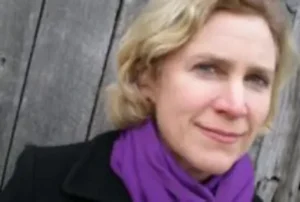Down in West Texas there is a one-armed cotton farmer named Cliff Etheredge who has turned the sirocco that blows through his part of the country into an asset—and not just for himself, but for hundreds of his neighbors.
“We used to pray for rain and curse the wind,” Mr. Etheredge tells filmmaker Peter Byck in the recently released documentary Carbon Nation. But now he and four hundred of his neighbors in Roscoe are wind farming, in what is at the moment the largest wind farm in the country. Here turbines are slowly turning above hundreds of small, contiguous plots of land. Nobody is getting rich, but all these farm families are earning a good chunk of money a year (thousands of dollars in straight royalties based on the power generated) to produce clean wind energy for 250,000 people.
People in Roscoe have been growing cotton over a steadily depleting aquifer, and the town had been dying, but now some of its children are moving back to work in energy.
You can see part of the Etheredge interview and learn more about the Carbon Nation documentary here. For more on wind farming and other renewables in Texas, see this Popular Mechanics article. Or visit the Roscoe Wind Council site here.




2 comments
Katherine Dalton
I can think of many infelicities to a story like this one; among other things, I hate to see land taken out of production and all that community farming knowledge lost, even though this is an area (apparently) whose rainfall and aquifer could not sustain the cotton.
Nevertheless I will accept the good here as good, despite warts.
Nathan P. Origer
What troubles me:
“That’s a British company, Altezza. They work on the outside of the blades and towers, like spacewalkers. That building had been vacant for a dozen years, easily. This is General Electric–there’s 150 workers there. It used to be a Coca-Cola storage facility. At one point, a quarter of all GE turbines in the world were built here. Northwind moved into that one; it held a company that made deer blinds.”
It’s the same thing that we’re seeing in rural west-by-northwestern Indiana, which, surprisingly enough, is becoming a significant wind-energy leader (and is experimenting in other alternative-energy fields). It’s great that we’re making this attempt more sustainably to power the world (even if it’s ultimately an attempt “sustainably” to power a fundamentally unsustainable way of life). But it’s happening by way of big-government–big-business collusion/subsidies/big-business control of sustainable-energy-based local economic development. I realize that expecting small businesses to have any major role in wind power is perhaps hopeless (notwithstanding the presumably local ancillary companies, e.g., Evans Enterprises, mentioned in the linked-to article), but is this “good news” worth the continuation of the same old Faustian song-and-dance?
Comments are closed.